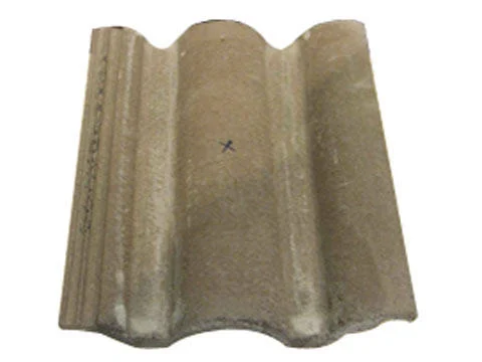Impact Performance of Roofing Tiles
More than any other exterior surface a building's roof is the one that is exposed to the most impacts from weather-driven objects such as tree debris and ice. Roof tiles cracked by impacting objects will allow moisture to penetrate and decay the underlying structure resulting in costly repairs. Arbitrarily increasing the tile thickness can improve impact performance; however designers must then consider the additional weight and cost of materials inherent in this simplistic approach Impact performance at both high and low energies, need to be accurately quantified in order to optimize the design of the tiles.
We were recently asked by a supplier of synthetic roofing tiles to assist them in choosing an instrumented impact system that could be used to perform low energy tests to ascertain how much damage may occur to their products. The customer supplied us with several samples of two different styles of tiles that they manufacture.
Both our Instron 9440 and our Instron 9450 Impact Test Machines are capable of performing the tests that the customer wanted to do. A custom support fixture which simulates the position and way that the tiles are installed was designed and recommended to the customer. Instrumented with a 22.2kN tup, ½” hemispherical tup insert, as well as our DAS Data Acquisition System and Bluehill Impact software, we were able to establish the energy levels at which incipient damage begins to occur in the tiles supplied. We prevented any secondary impacts on the specimen by installing the Anti Rebound Device.
Either the 9440 or the 9450 are well suited for helping customers determine the performance characteristics of their materials when subjected to an impact event. The information gathered by doing instrumented impact testing can be used to provide the customer with a data baseline whereby they can determine how changes made in the mix of raw materials will perform in real life situations. A broader range of testing could be accomplished with the use of an environmental chamber to study impact characteristics at different temperatures as well as using different fixtures and inserts to simulate other unsupported spans and impact events.
9400 Series Drop Tower Brochure
Instron Drop Towers are used to develop, fine tune, and validate material models. Testing materials under real impact conditions is a crucial step prior of product design. Using the characterization data obtained with the Instron 9400, coupled with customer supplied high-speed video, you can have confidence in your results and deliver new materials to your customers faster. Our Drop Tower impact systems, fixtures, and tups are designed to meet a wide range of applications and testing standards including: ISO, ASTM, ANSI, Airbus, Boeing, BSI, DIN, EN, FDA, Ford, GM, JIS, NASA, GOST, and more.
- Products
- 02/05/2020
- 763.1 KB
9400 Series Dashboard Brochure
Bluehill® Impact is built from the ground up for touch interaction. The Operator Dashboard features large touchpoints to make the user experience simpler and smarter. Easy-to-understand icons and workflows make it easy to train new or experienced users, simplify operator training, and allow you to start testing even faster than ever before
- Products
- 08/01/2019
- 2.35 MB


